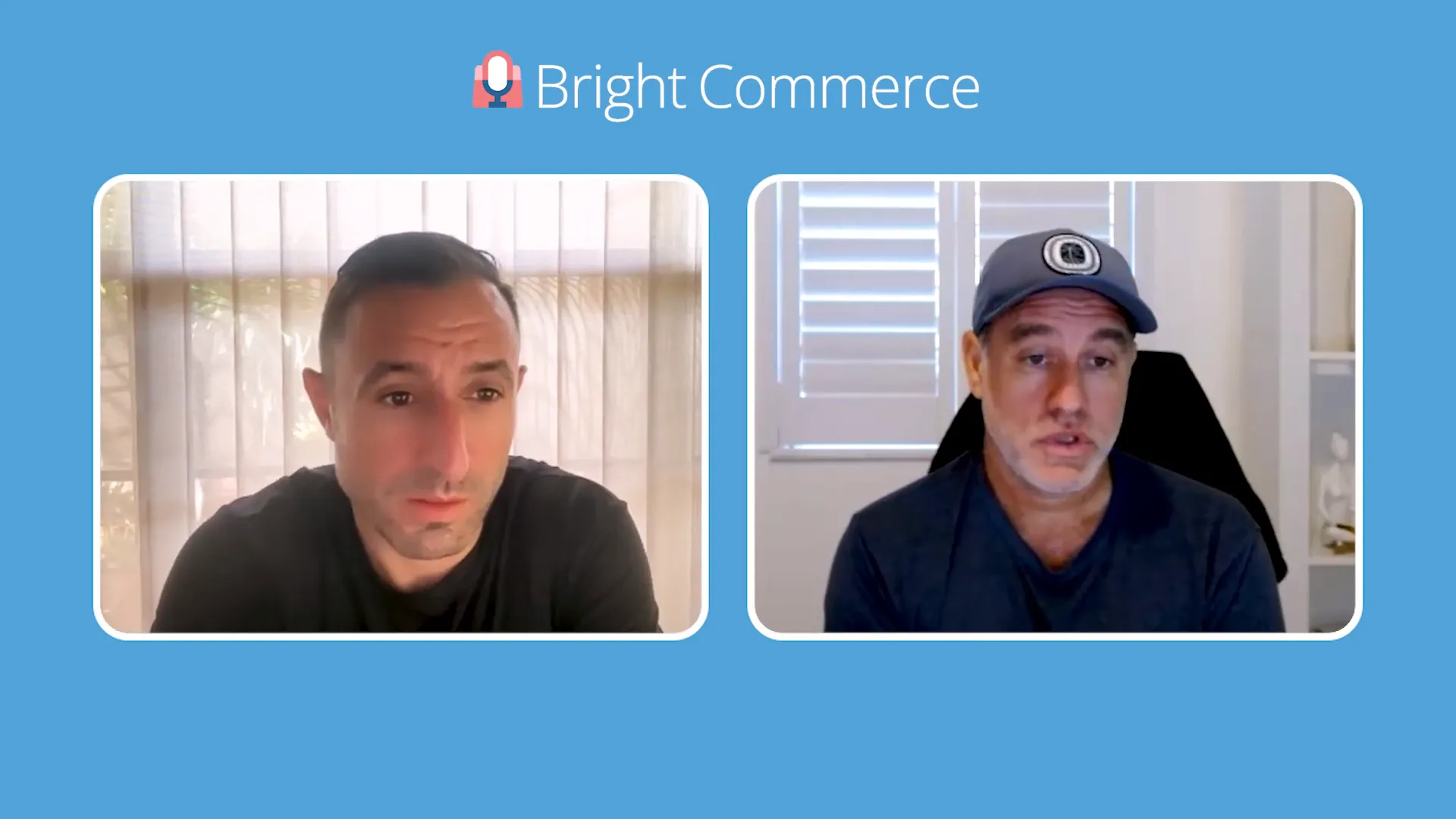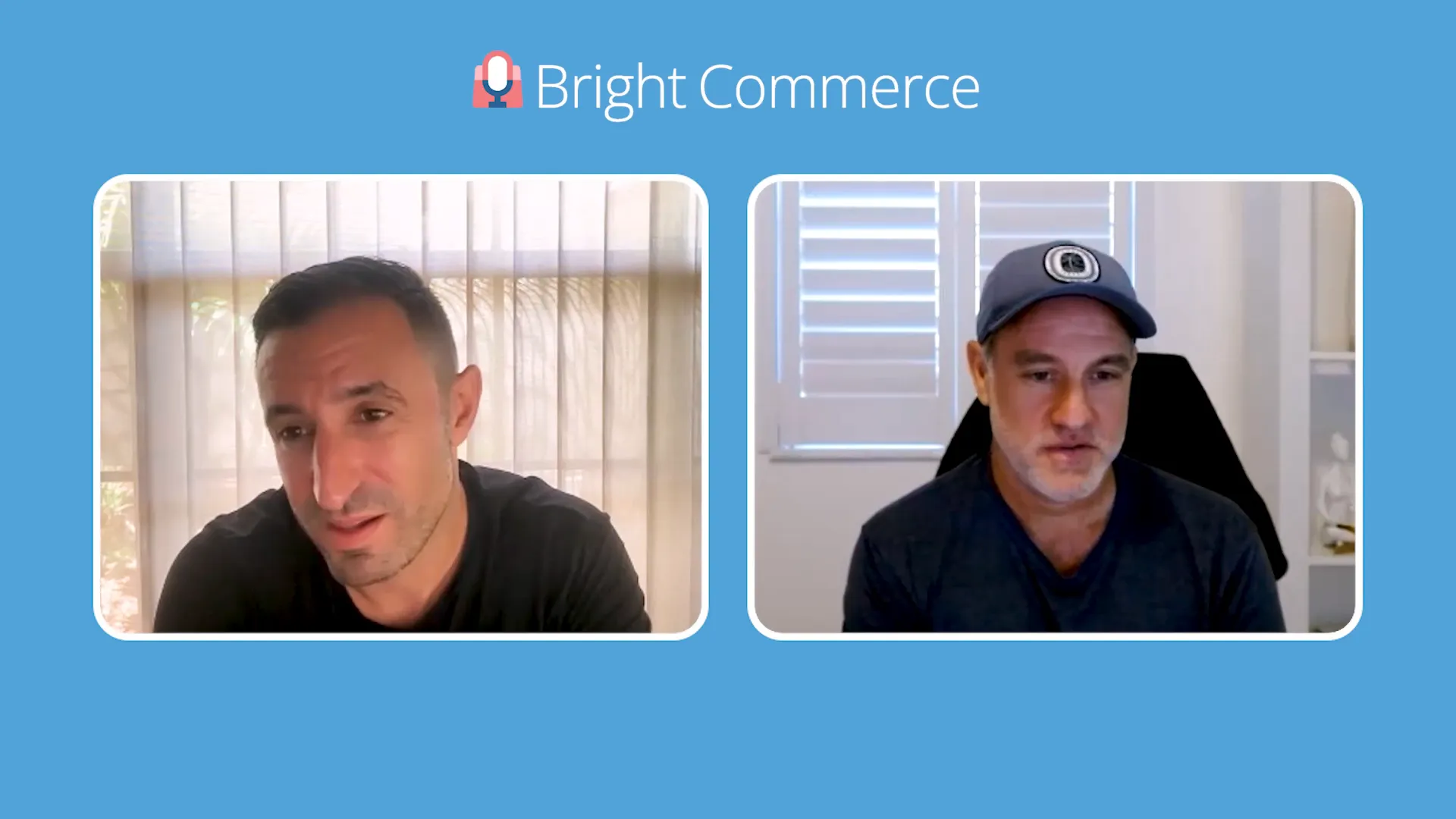Web Application Breakdown: Crafting an Effective Strategy for Your Next Web Project
Welcome to the comprehensive Web Application Breakdown, where we delve into the key phases of building a successful web application. In this detailed guide, inspired by the insightful Bright Commerce Podcast episode featuring Judd Dunagan from Bright Vessel and Carlos Caneja from Bright Code, we focus on the critical strategy phase of web development projects.
Whether you’re a business owner preparing to launch a new website, a developer navigating client requirements, or an agency project manager aiming to streamline workflows, understanding how to strategize after discovery is crucial for effective management. This article will guide you through the nuances of defining project goals, managing client expectations, handling technology stacks, and ensuring smooth execution from planning to delivery.
Table of Contents
- Understanding the Strategy Phase
- Discovery vs. Strategy: Where They Overlap
- Client Questionnaires and Initial Conversations
- Handling Complex Requirements and Customizations
- Defining Project Goals: Branding, SEO, and More
- SEO Considerations and Audits
- Choosing the Right Technology Stack
- E-Commerce Implementation: Challenges and Best Practices
- Licensing and Ongoing Maintenance
- Reporting, Objectives, and Milestones
- Frequently Asked Questions
- Conclusion
Understanding the Strategy Phase
The strategy phase follows the discovery phase in building a web application. After gathering requirements and understanding the client’s needs, the strategy phase involves formulating an actionable plan to ensure the project’s successful execution.
Judd and Carlos emphasize that by this point, you should have already provided an estimate or invoice to the client. The strategy phase involves deciding how to proceed with the project, including defining clear goals, setting expectations, and planning resources. This phase is crucial for projects with complex or customized functionality, especially those beyond out-of-the-box solutions, to avoid surprises and scope creep later.
Billing clients for this strategy phase is often advisable, especially when the project requires deep technical analysis or custom development. This upfront investment results in a tangible deliverable: a well-documented plan that benefits both the client and the development team.
Discovery vs. Strategy: Where They Overlap
One key takeaway from the podcast is that the discovery and strategy phases often overlap. Discovery involves uncovering all project requirements, including hidden or technical details that the client may not know initially. Strategy then builds on this knowledge to outline how those requirements will be met.
Sometimes, new information emerges during design or development that requires revisiting discovery or strategy. This iterative nature means flexibility and clear communication between client and developer are essential.
For example, integrating an ERP system like NetSuite requires understanding specific business rules, such as calculating and displaying inventory levels on the website. These nuances can be overlooked without thorough discovery, resulting in costly rework.

Client Questionnaires and Initial Conversations
Effective communication starts with the right questions. Both hosts agree that having a detailed questionnaire or conducting a thorough sales call helps gather vital information early. This step can prevent misunderstandings and scope creep later.
Typical questions to ask include:
- How many products will the site have?
- What is the monthly traffic volume?
- How many orders are processed monthly?
- Are there any ERP or CRM systems that can be integrated?
- Do they already have branding assets, such as logos and style guides?
Clients sometimes find detailed questionnaires daunting, so walking through questions during a one-on-one call is often more effective. This approach also allows developers to clarify technical terms and explain why certain information is necessary.
Handling Complex Requirements and Customizations
Setting clear expectations is crucial when working with custom features not included in the standard platform, such as WooCommerce. Carlos shares an example of a client with a licensing server built into WordPress/WooCommerce. The project was split into two parts: a flat quote for UX/UI fixes and sprint-based billing for the complex licensing server rewrite.
This hybrid approach allows for flexibility and transparency, especially when the full scope of work isn’t immediately clear. It also helps prevent scope creep and ensures clients understand the cost implications of custom development.
Furthermore, if the client lacks technical expertise or has lost their technical lead, the discovery and strategy phases become even more critical to uncover hidden requirements and potential pitfalls.
Defining Project Goals: Branding, SEO, and More
Defining clear project goals is at the heart of the strategy phase. Judd and Carlos highlight several key areas to consider:
Branding
Branding is foundational. A logo, color palette, and style guide help ensure the website’s look and feel align with the company’s identity. Agencies often recommend investing in logo design and brand development for clients without existing branding before proceeding.
While small local businesses may overlook branding, those willing to invest usually appreciate the value of a cohesive brand in building trust and recognition.
SEO
SEO strategy is another critical consideration. If the client has an existing SEO footprint, maintaining or improving it during a redesign or platform migration is vital. This involves:
- Analyzing two years of analytics data to identify top landing pages.
- Reviewing Google Search Console and backlink profiles using tools like SEMrush or Ahrefs.
- Planning 301 redirects and URL structure to preserve SEO equity.
Clients must be informed about potential short-term traffic fluctuations during migration, and agencies should manage expectations accordingly.
Site Speed
Site speed impacts user experience and SEO. The strategy phase should address hosting, caching, and performance optimization techniques to ensure the site loads quickly, especially on mobile devices.
E-Commerce Implementation
For e-commerce projects, defining product counts, integrations, shipping methods, and payment gateways early helps accurately scope the development effort.
Objectives and Timeline
Clear objectives and realistic timelines help keep the project on track. Breaking the project into phases, discovery, design, development, and post-launch, provides structure and milestones.
Reporting
Regular updates and transparent communication help build trust and allow for course corrections as needed.
SEO Considerations and Audits
SEO is a complex and often misunderstood area. The podcast hosts share experiences where improper SEO practices, such as black-hat tactics or poor migrations, have caused significant traffic drops.
Examples include:
- Use of CTR manipulation tools, such as “surf clicks,” that backfired.
- Switching platforms without preserving URL structures and backlinks.
- Sites suffering from black hat penalties or lost backlinks.
Performing an SEO audit after a redesign or migration is crucial for identifying issues and developing a recovery plan.
Working with SEO professionals or firms alongside web developers ensures that SEO best practices are integrated into the project.
Choosing the Right Technology Stack
The technology stack underpins the entire project. Judd and Carlos agree on a typical stack for WordPress/WooCommerce projects, including:
- Page Builders: Beaver Builder, Elementor, and Oxygen Builder (noted for speed and extensibility).
- Form Plugins: Gravity Forms, Ninja Forms, and Fluent Forms.
- SEO Plugins: All in One SEO (preferred by Carlos) and Yoast.
- Caching and Performance: WP Rocket is favored for caching and minification and is sometimes preferred over Cloudflare for speed optimization.
- E-Commerce Plugins: WooCommerce core, WooCommerce Bookings and Subscriptions, and PluginHive for multi-carrier shipping.
They emphasize the importance of standardizing on a consistent set of plugins and builders to minimize maintenance complexity and prevent conflicts.
To keep costs manageable, customization should be minimized where possible. Rely on proven plugins and only build custom features when necessary.
E-Commerce Implementation: Challenges and Best Practices
E-commerce projects introduce unique challenges such as:
- Handling extensive product catalogs and high order volumes.
- Integrating with ERP and CRM systems for inventory, pricing, and order management.
- Setting up shipping carriers and accurately calculating taxes.
- Managing complex pricing models like tiered pricing and tax exemptions for B2B clients.
Both hosts emphasize the growing importance of B2B e-commerce as a stable and lucrative niche. B2B projects often present more straightforward requirements than B2C projects, which may involve greater marketing complexity and evolving client demands.
Tax compliance is crucial, particularly with the evolving regulations in multiple states. TaxJar or Avalara helps automate tax collection, reporting, and filing, reducing merchants’ risk.
Shipping solutions such as PluginHive’s multi-carrier shipping plugin streamline real-time shipping calculations and enhance the customer experience.

Licensing and Ongoing Maintenance
Licensing for premium plugins can be a hidden cost for clients. Judd and Carlos recommend agencies purchase unlimited or lifetime licenses for frequently used plugins such as Gravity Forms, B2B King, and sales management tools. This approach offers several advantages:
- Cost savings for clients are achieved by including licenses in the project or management fees.
- Consistency in plugin versions across client sites.
- Easier ongoing maintenance and updates.
To avoid surprises, clients should know the licensing costs they will incur after launch.
Maintenance also includes managing updates carefully. Auto-updates can break sites, especially e-commerce stores, so most agencies disable them and handle updates manually, combined with robust security measures like firewalls, malware scanning, and hardening techniques.
Reporting, Objectives, and Milestones
Clear communication, defined objectives, and milestones are essential for project success. Judd breaks down the project into three main phases:
- Design Phase: Wireframes, mockups, and UX/UI design approvals.
- Development Phase: Coding, integration, and feature builds based on approved designs.
- Post-Launch Phase: Testing, bug fixes, optimizations, and ongoing support.
Modern tools like Figma have greatly improved collaboration and clarity between designers, developers, and clients compared to older tools like Photoshop or Adobe XD.
Holding weekly or bi-weekly one-on-one client meetings helps manage expectations, review progress, and adjust the scope as needed for complex projects.
Frequently Asked Questions
Q: Why should I invest in a paid discovery and strategy phase?
A: Paid discovery and strategy phases provide a clear, detailed understanding of project requirements, reducing risks of scope creep and misunderstandings. It results in a tangible plan that benefits you and your agency, often saving time and money in the long run.
Q: How do I handle scope creep during development?
A: Establish clear project boundaries upfront and use sprint-based billing for custom or evolving features. Maintain open communication with clients about changes and their impact on the timeline and budget.
Q: What technology stack is best for WordPress e-commerce projects?
A: Standardizing on popular page builders like Elementor or Beaver Builder, form plugins like Gravity Forms, and SEO tools like All in One SEO helps maintain consistency. Utilize WooCommerce for e-commerce, complemented by specialized plugins for bookings, subscriptions, shipping, and taxes.
Q: How do I ensure SEO is preserved during a website migration?
A: Conduct thorough SEO audits, maintain URL structures where possible, implement 301 redirects, and analyze backlink profiles. Collaborate with SEO experts and inform clients about potential short-term fluctuations in traffic.
Q: What are the best practices for managing plugin licenses?
A: Agencies should consider purchasing unlimited or lifetime licenses for frequently used plugins to reduce client costs and simplify maintenance. They should always inform clients about any licenses they need to renew or purchase post-launch.
Conclusion
Crafting a successful web application requires more than coding skills; it demands a strategic approach that aligns client goals with technical realities. The Web Application Breakdown podcast episode on strategy offers invaluable insights into managing this complex process effectively.
The strategy phase lays the foundation for a smooth development journey, encompassing thorough discovery and client communication, selecting the right technology stack, and managing SEO and licensing. By investing time and resources upfront to define clear objectives, handle customizations wisely, and maintain transparency, agencies and clients can avoid pitfalls like scope creep, unexpected costs, and performance issues.
As web projects grow more complex, embracing structured phases, sprint billing, and ongoing collaboration becomes essential. Whether building a simple brand site or a complex B2B e-commerce platform, the principles discussed here will help you navigate the challenges and deliver a well-rounded, successful web application.
Stay tuned for the next part of the series, where Judd and Carlos will dive deep into the design phase, focusing on risk management, user experience, and interface design.
For more insights and expert services, visit Bright Vessel and Bright Code.
